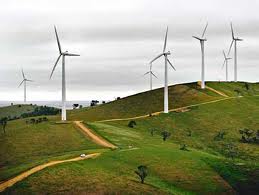By Giles Parkinson on 4 March 2014
One of the most depressing discussions I have ever had as editor of RenewEconomy was with a policy advisor for a state Coalition government. He started off by giving me a lecture about how his minister only acted on “evidence based information”, and then proceeded to quote some of the more outrageous nonsense published in the Murdoch media and some extremely marginal web-sites.
Perhaps, then, this person and all the other advisors who direct (or distort) energy policy at state and federal level with the conservative administrations should sit down and absorb the latest report by the International Energy Agency on the integration of wind and solar energy. It might reduce the ignorance and misinformation that is having a profound impact on renewable policy in Australia.
The IEA is a useful reference point. It is a highly conservative organization that was created after the 1970s gas crisis to ensure the continuation of energy supply. Energy security is its fundamental raison d’etre. And although some people, as we reported yesterday, criticise it for being way too conservative on solar PV costs, for instance, its research into renewables and systems integration debunks a lot of myths seemingly invented by Abbott’s acolytes and perpetuated by the politicians themselves.
 The first myth, of course, is around the cost of renewables. As any number of studies have shown, Australia’s renewable energy target has added just 3 per cent to electricity bills, and has probably helped reduce them by that amount by helping push wholesale electricity prices down to record lows. And as the IEA notes, the levellised cost of electricity of wind power and solar PV is “close to even below the LCOE of fossil or nuclear options.
The first myth, of course, is around the cost of renewables. As any number of studies have shown, Australia’s renewable energy target has added just 3 per cent to electricity bills, and has probably helped reduce them by that amount by helping push wholesale electricity prices down to record lows. And as the IEA notes, the levellised cost of electricity of wind power and solar PV is “close to even below the LCOE of fossil or nuclear options.But that is not what the latest IEA report is about. It’s about the integration of solar and wind – what it calls variable renewable energy, or VRE – into new and existing grids. And it serves to completely debunk some of the other nonsense about renewables needing “back-up” fossil fuels, and adding huge costs to infrastructure.
The IEA could not be any clearer: “No additional dispatchable capacity ever needs to be built because VRE is in the system. On the contrary, to the extent of the capacity credit of VRE, its addition to the system reduces the need for other capacity.”
As the IEA also notes, since the early days of electrification in the late 19th century, variability and uncertainty have been steady companions of power systems. Indeed, the largest source of uncertainty comes from the failure of plants or other system components, which can cause abrupt and unexpected variations in supply. As Australia’s Energy Market Operator found out in the latest heatwaves, when large coal and gas fired generators suddenly stopped generating.
And, the IEA further notes, there are very few grid-related costs to absorb even high shares of wind and solar.

No comments:
Post a Comment